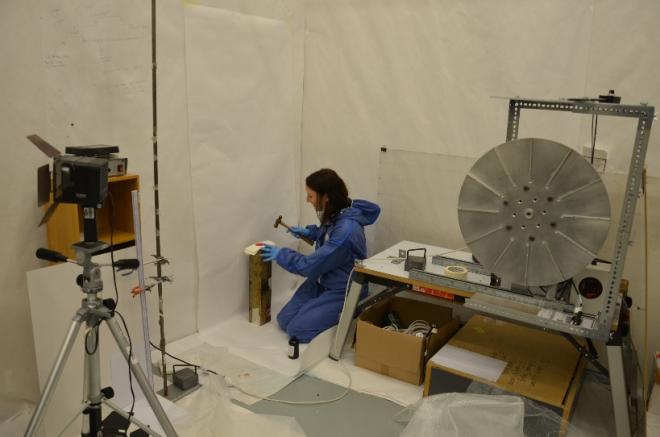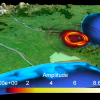Investigating the reliability of bloodstain pattern analysis
Psychological scientist Dr Niki Osborne, from both the Department of Psychology at the University of Otago and the Institute of Environmental Science and Research Ltd (ESR), is getting accustomed to her friends calling her “Dexter” – after all, she spends her days looking at blood spatter.
Her recent research project on the topic of bloodstain pattern analysis (BPA) is helping to progress a research programme critical to New Zealand’s criminal justice system. In utilising NeSI’s facilities, Niki was able to take her research to the next level by grounding it in a computationally complex Bayesian framework.
With help from Dr Matt Healey at NeSI, Niki and her research colleagues were able to benchmark and test computationally intensive Bayesian alternatives to the more commonly used, and much debated, frequentist framework of null hypothesis significance testing.
“Without an organisation like NeSI, and the services that they provide, it is unlikely that we would have been able to advance the research methodology to a Bayesian framework. Doing so gave us not only the required computational power to run large effective-n Bayesian tests, but also the methodological freedom to plan subsequent scaled-up Bayesian tests in an iterative research paradigm. It’s only a matter of time now before more psychological/health/social scientists cotton on to this massive opportunity for research advancement that NeSI provides. We’re just glad to be at the forefront of it. Cheers NeSI!”
Together with world-renowned crime scene investigator and bloodstain pattern analyst Dr Michael Taylor (ESR), and University of Otago Senior Lecturer in Psychology Dr Rachel Zajac, Niki is investigating the factors that influence reliability in bloodstain pattern analysis. With a new frontier of computational science laid out before them, Niki and her colleagues are pushing the application of psychological science to forensic science.
The impetus behind Niki’s current work is the 2009 National Research Council report into the state of forensic science, which made specific reference to vulnerabilities to cognitive bias in forensic science, and called for research to understand and address these. This report and subsequent research has highlighted subjective processing in almost all forensic disciplines, including forensic odontology, handwriting examination, forensic anthropology, shoeprint comparisons, bullet comparisons, DNA interpretation, and BPA.
BPA is a pattern recognition task in which interpretation of the size, shape, and distribution of bloodstains can provide valuable information in a crime scene investigation. This analysis can help to piece together the events of the crime and in some cases might help to distinguish between, for example, homicide and suicide, or self-defence and murder. In the course of a bloodstain pattern analysis, analysts can be exposed to a plethora of information, such as police investigators’ theories, witness statements, type of injuries sustained by the victim, or the type of weapon used. All of this information may – consciously or subconsciously – influence how analysts interpret the bloodstain patterns. Given that a large degree of contextual information in BPA is unavoidable, research to investigate how contextual information might influence BPA decisions is paramount.
In the current research project, with NeSI’s help, Niki’s team found that the provision of contextual information can influence the interpretation of bloodstain pattern evidence. This finding highlights the need for context-management procedures in BPA.
We at NeSI wish Niki and her research partners all the best and eagerly await her next round of forensic decision-making research.







